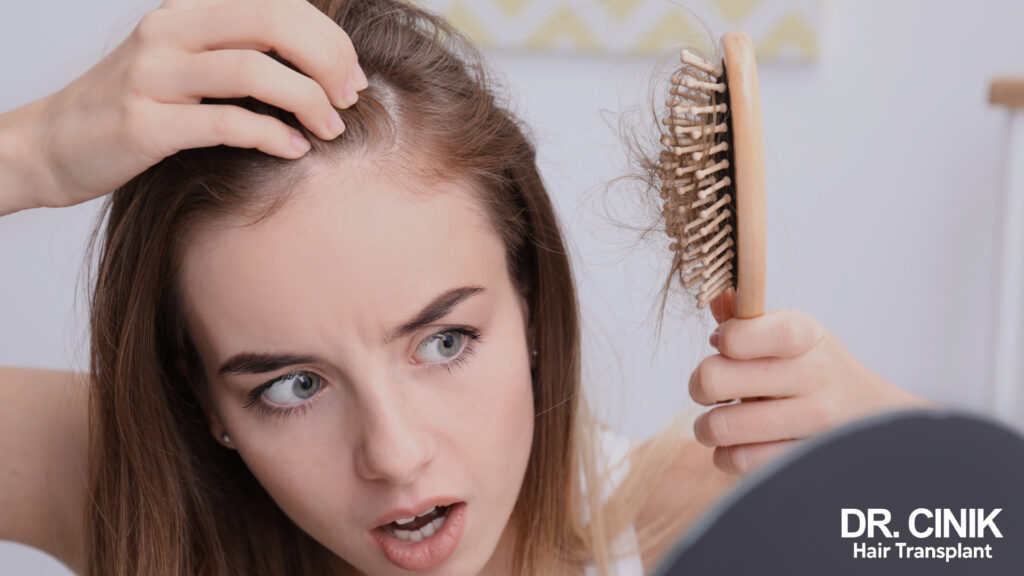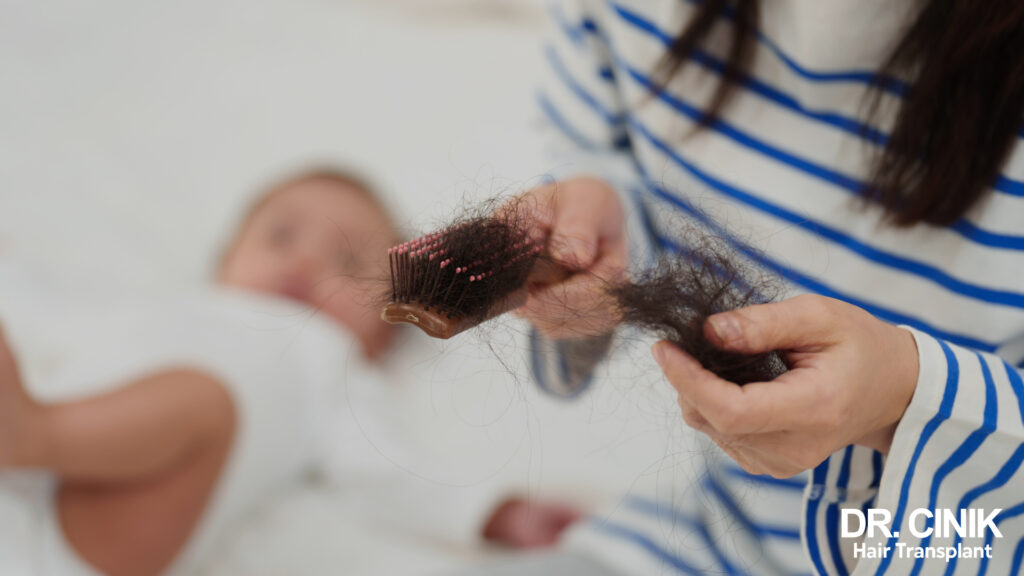Lack of Iron and Hair Loss: What You Need to Know
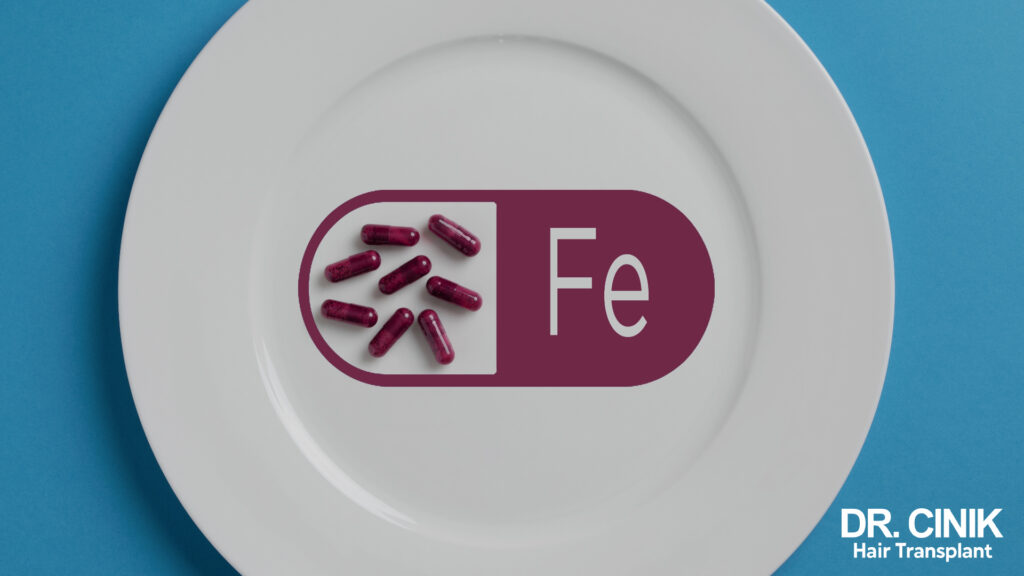
Summary
Hair loss is a common concern that affects many people at different stages of their lives. While genetic and hormonal factors are often highlighted, the role of nutritional deficiencies, particularly in iron, remains largely unknown to the general public. However, this essential mineral plays a crucial role in hair health (Trost et al., 2006). Between natural renewal cycles and signs of deficiency, understanding the link between lack of iron and hair loss allows for the adoption of appropriate solutions to preserve or regain a thick and vigorous head of hair. Discover the mechanisms, the at-risk populations, and the solutions to address this issue.
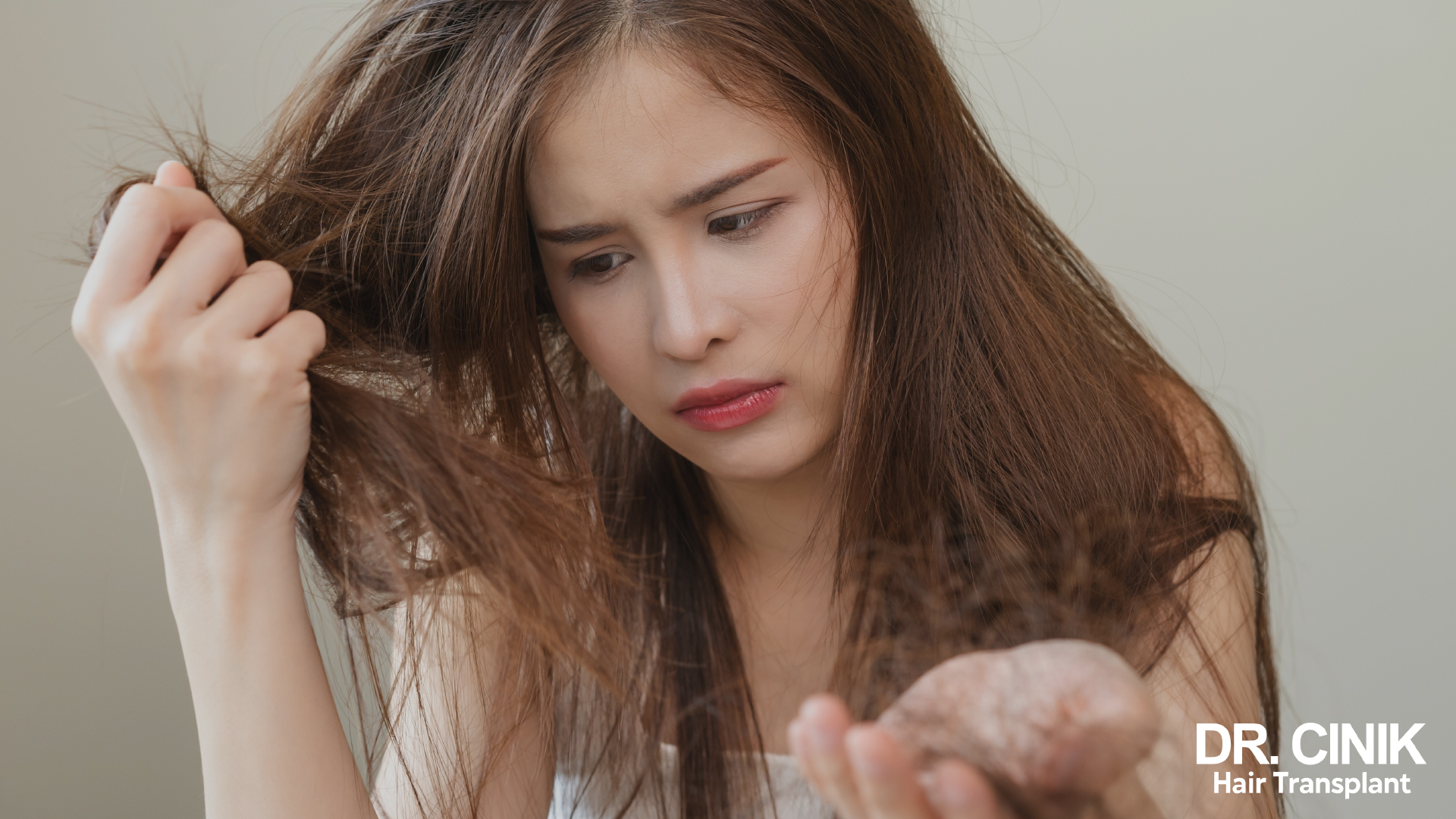
Hair Loss: What Are We Talking About?
Hair loss is a daily phenomenon that is part of a normal biological process. Our scalp hosts around 1 million hair follicles, capable of producing up to 150,000 hairs depending on the individual. Each hair, originating from a hair follicle, follows a well-defined hair cycle composed of three distinct phases:
- The anagen phase, or growth phase, lasts for 2 to 6 years. During this crucial stage, the matrix cells proliferate to form the inner sheath of the root, the cortex, and the medulla of the hair shaft. It is only during this phase that the synthesis and pigmentation of the hair shaft occur. The duration of this phase determines the potential length of the hair, with an average growth of about 1 centimetre per month.
- Then comes the catagen phase, much shorter, lasting between 2 and 3 weeks. It begins with the cessation of melanin production (the pigment responsible for hair colour) in the hair bulb. During this transitional period, the hair stops growing but remains attached to its follicle.
- Finally, the telogen phase, or resting phase, lasts for 2 to 3 months. The follicles enter a dormant period, while the hair shaft eventually detaches. Meanwhile, the follicle already begins to produce a new hair under the skin, thus initiating a new cycle.
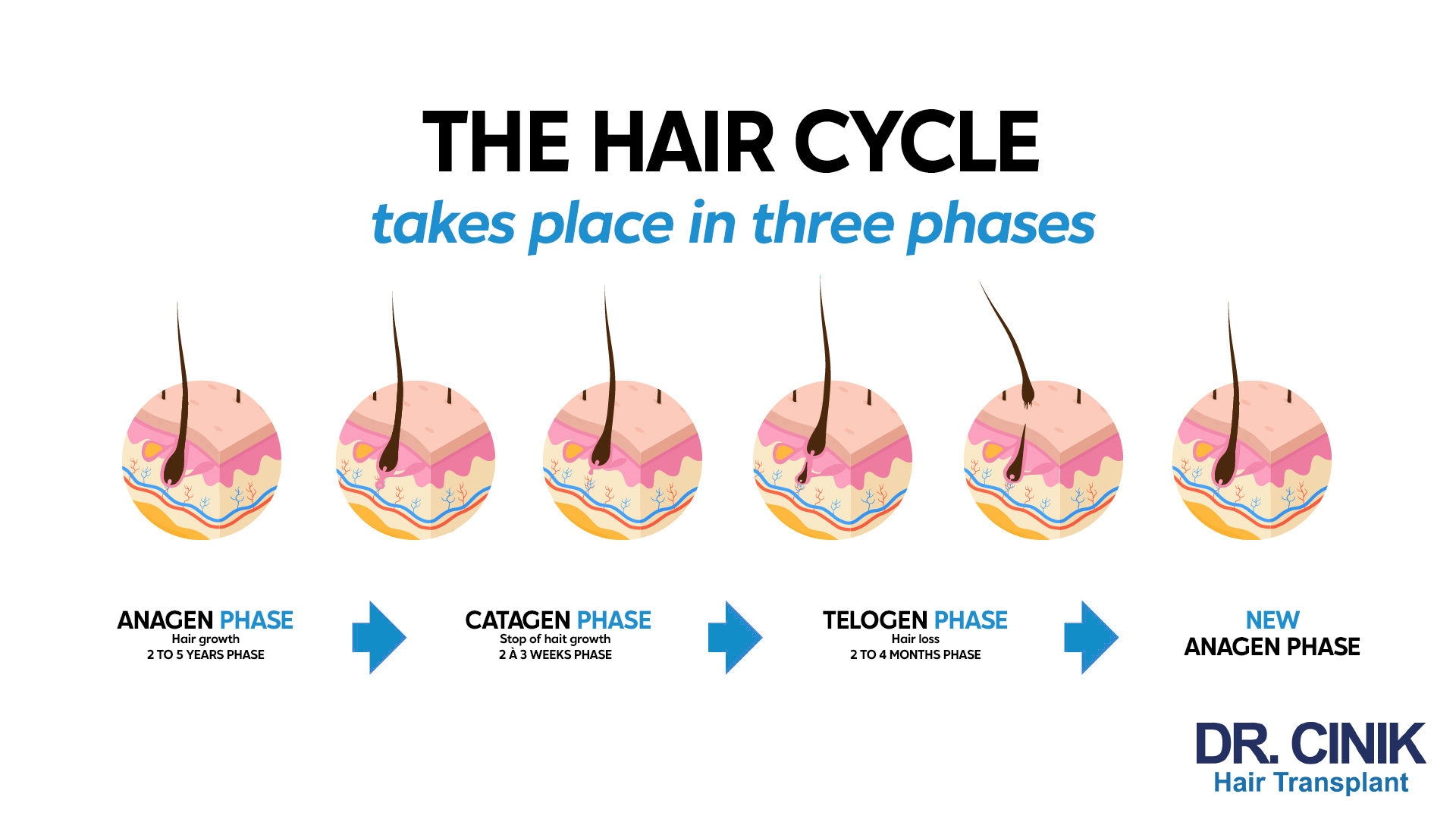
Did you know? Not all the hairs on a head are simultaneously in the same phase. Each one has its own independent life cycle: some are in full growth, others are about to fall out. This asynchrony explains why we naturally lose between 50 and 100 hairs per day, without this affecting the overall appearance or density of our hair.
Over a lifetime, each hair follicle can experience between 12 and 30 complete renewal cycles. However, this rhythm is not immutable and can be influenced by various factors, including hormonal and nutritional variations, such as iron deficiencies.
Does Iron Deficiency Cause Hair Loss?
Iron plays a fundamental role in our body, particularly as an essential component of haemoglobin. This protein, present in red blood cells, ensures the transport of oxygen to all the tissues of the body, including the hair follicles (Trost et al., 2006).
The oxygen supply to the hair follicles, provided by the blood capillaries of the scalp, is absolutely essential for the growth of healthy and vigorous hair. When this supply becomes insufficient due to an iron deficiency, the hair cycle can be disrupted, leading to premature hair loss (Almohanna et al., 2018).
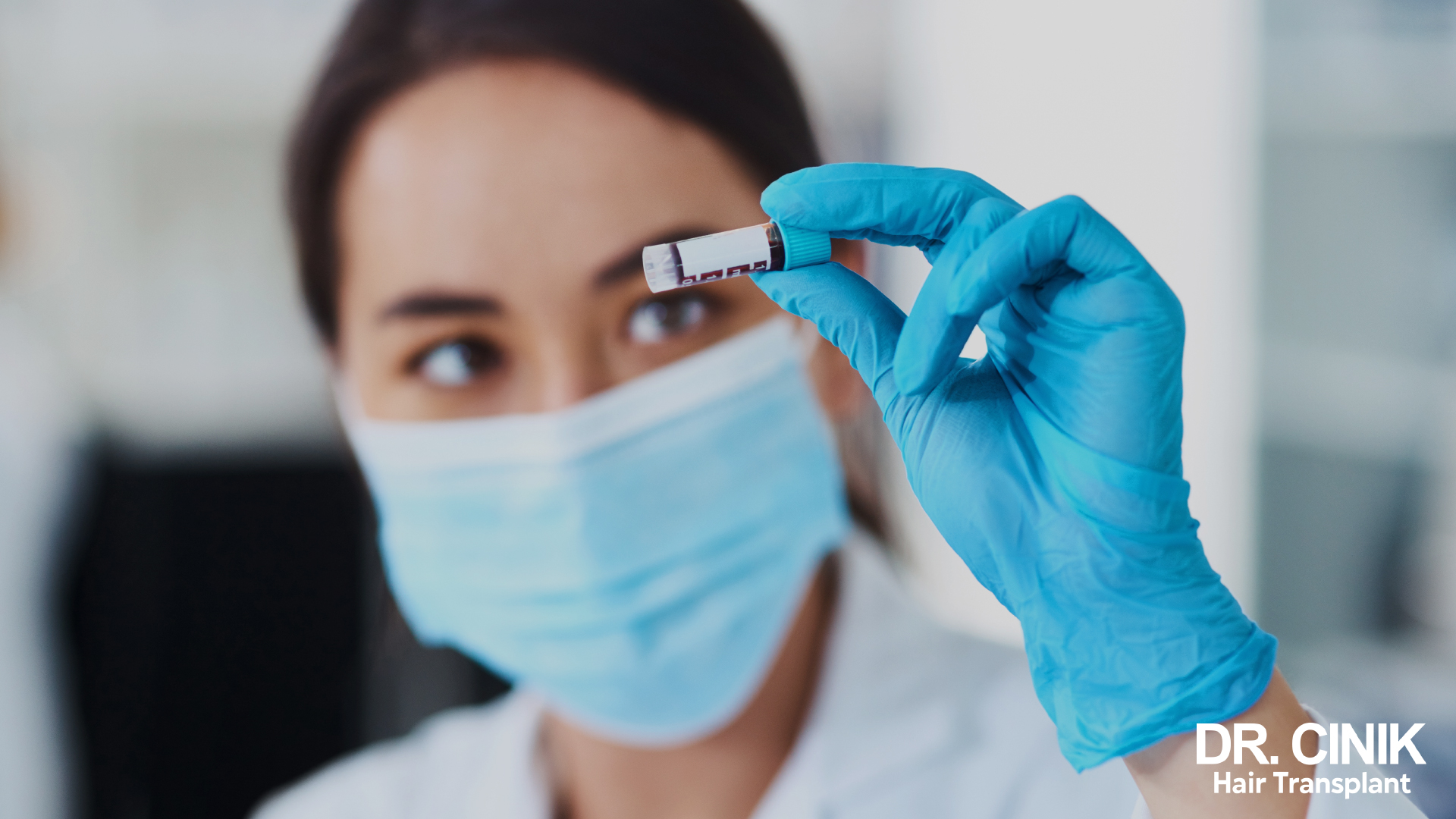
Numerous scientific studies have established a significant link between low iron levels in the blood and various forms of hair loss. This correlation is particularly observed in two specific conditions: telogen effluvium, whether acute or chronic, and androgenetic alopecia (Park et al., 2013).
In the case of telogen effluvium, iron deficiency can cause a premature and massive shift of hair from the anagen phase to the telogen phase, leading to a diffuse and sometimes spectacular hair loss across the entire scalp. As for androgenetic alopecia, although primarily of hormonal origin, it can be exacerbated by an iron deficiency, which further weakens the already sensitised hair follicles (Park et al., 2013).
Iron Deficiency: Who Is Most Affected?
Iron deficiency generally results from excessive blood loss that is not compensated by sufficient dietary intake. This issue mainly affects women of childbearing age, who lose on average twice as much iron as men. According to various studies, nearly half of them would present a more or less pronounced level of deficiency (Trost et al., 2006).
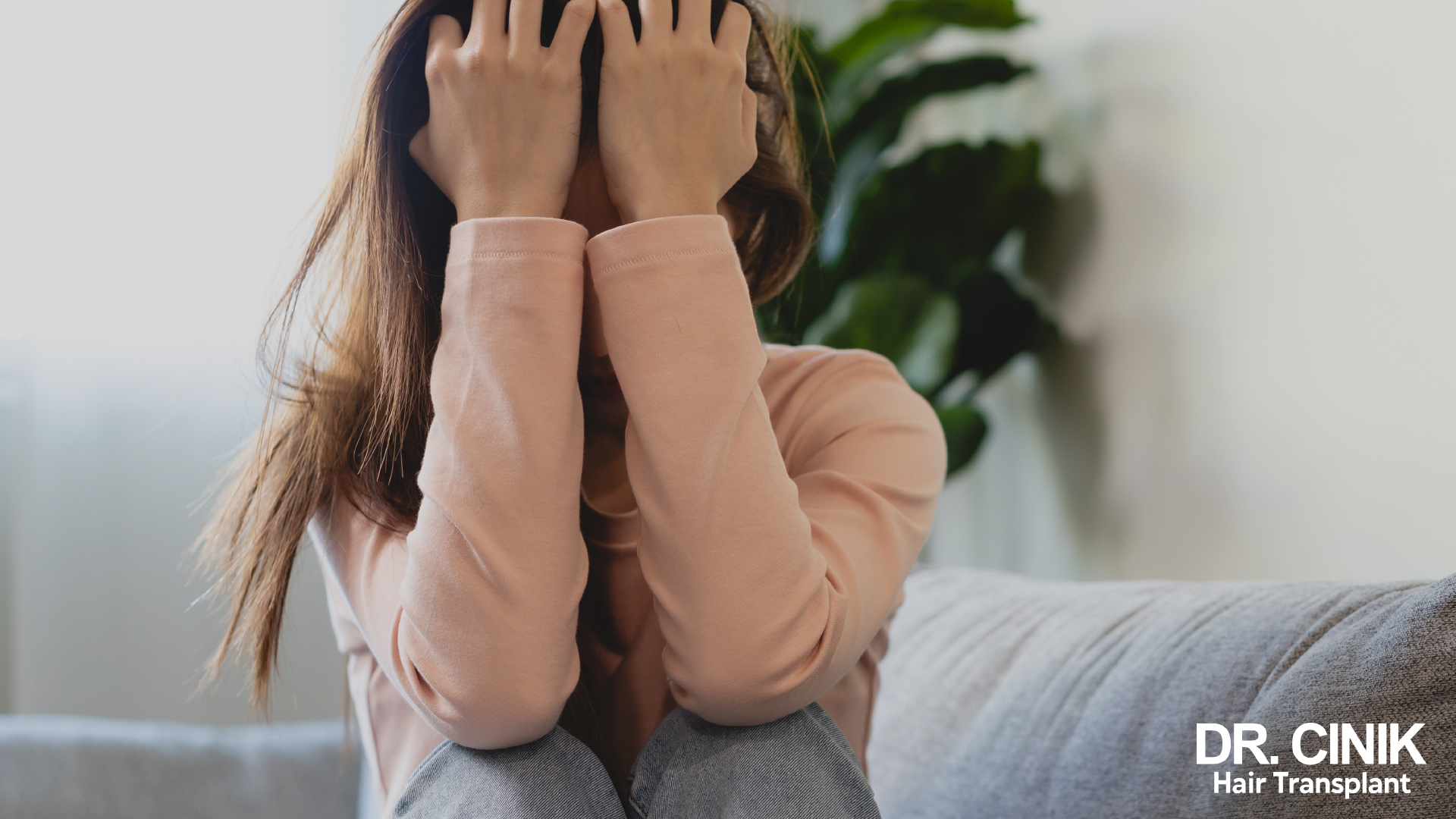
Several physiological situations or specific conditions significantly increase the risk of iron deficiency in women:
- Heavy and prolonged menstrual cycles, which result in significant and repeated blood loss.
- The use of an intrauterine device (IUD), which can accentuate the volume of menstrual bleeding.
- Pregnancy, particularly from the fourth month onwards, when the foetus directly draws on the mother’s iron reserves to produce its own red blood cells. This situation worsens during childbirth, which is usually accompanied by significant blood loss.
- Breastfeeding, closely spaced pregnancies or multiple pregnancies, which intensely deplete the mother’s nutritional resources.
- Prolonged restrictive diets, which often limit the intake of essential nutrients.
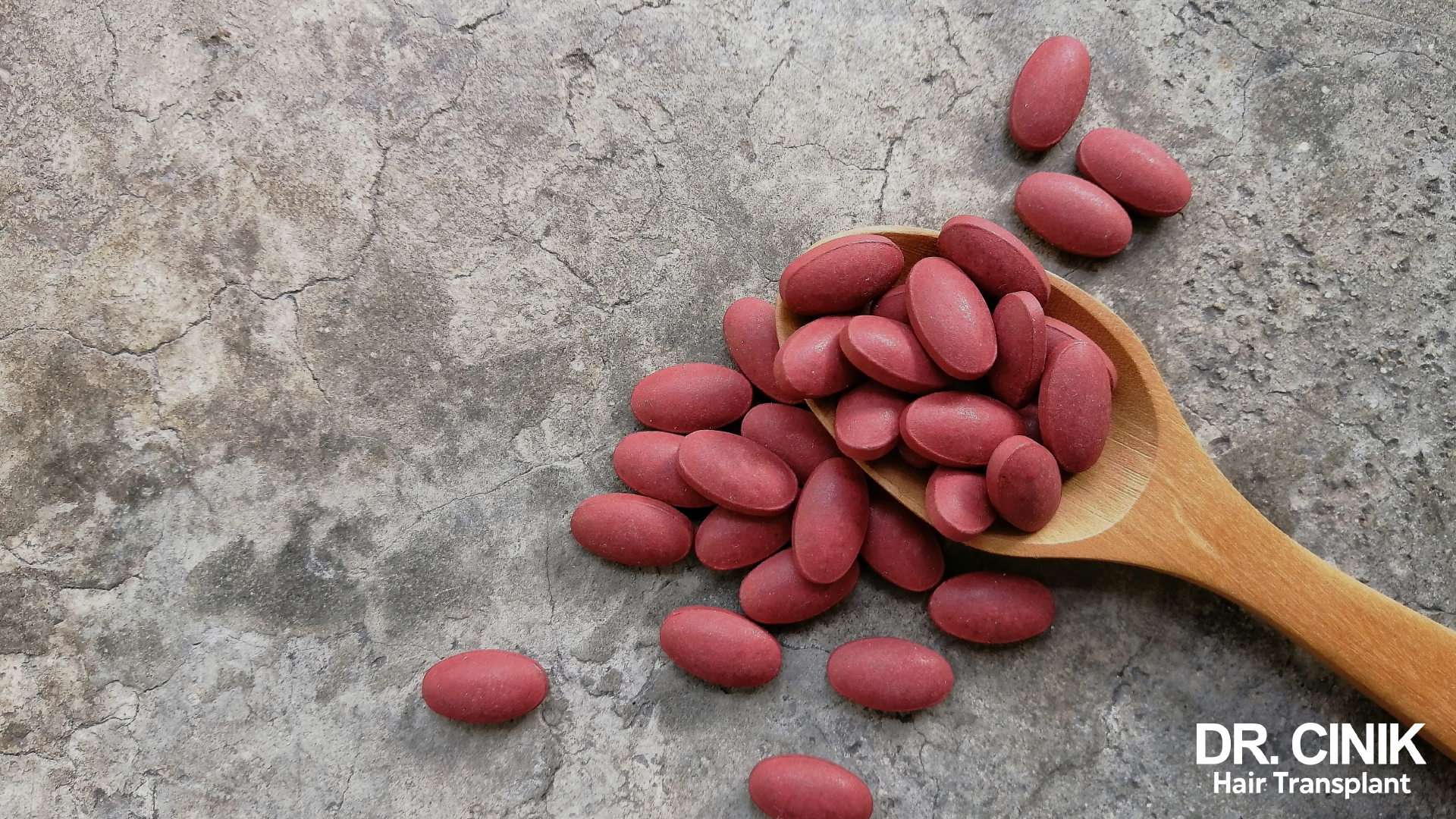
People following a vegetarian diet also constitute a population at risk for iron deficiency anaemia, for two main reasons (Almohanna et al., 2018):
- Plant-based foods generally contain less iron than meat or fish.
- The iron present in plants (non-haem iron) is four to five times less well absorbed by the body than that from animal products (haem iron).
What Are the Signs of Hair Loss Due to Iron Deficiency?
Identifying hair loss related to iron deficiency requires recognising certain characteristic signs that distinguish it from other types of alopecia.
The classic manifestations of hair loss associated with an iron deficiency include several visible symptoms across the entire head of hair. The hair often becomes brittle, fragile and dull, losing its natural shine throughout the scalp. Unlike some localised alopecia, the loss related to an iron deficiency generally manifests in a diffuse manner (Trost et al., 2006).
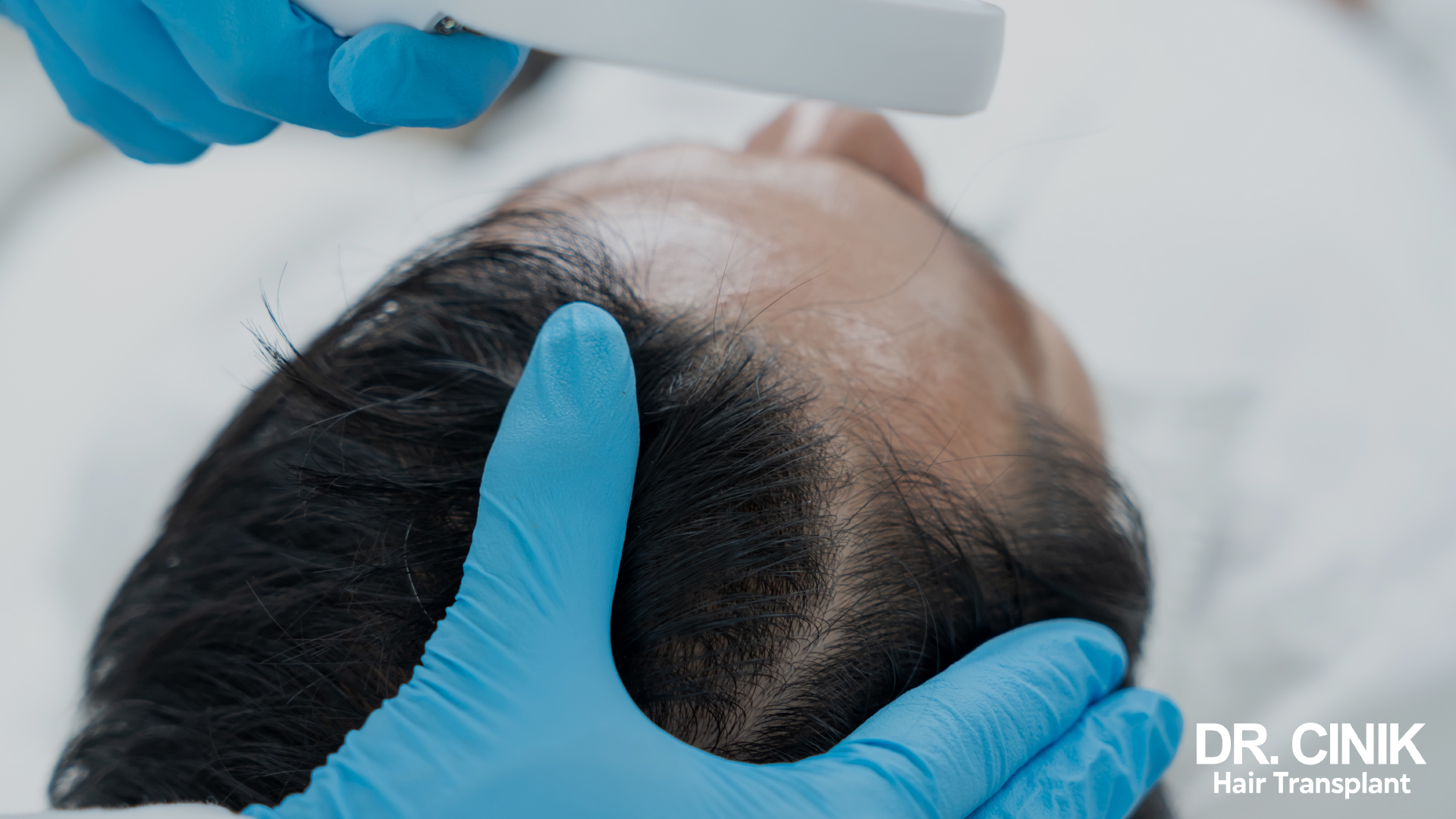
Affected individuals usually observe more abundant hair loss than normal (beyond the physiological 50 to 100 hairs per day), often accompanied by difficult, slow, or even non-existent regrowth in some areas. This situation gradually creates an impression of thinning hair, without presenting any totally bald areas as in other types of alopecia.
Good to know: An additional and often overlooked sign concerns the other body hairs: excessive loss of eyebrows or eyelashes can also indicate an underlying iron deficiency, as the metabolism of these hair follicles is similar to that of the scalp.
How to Regain Hair Density?
Regaining a dense and vigorous head of hair after a loss related to an iron deficiency requires a comprehensive approach that addresses the underlying cause while supporting hair health.
The first step is to enrich your diet with bioavailable sources of iron. Prioritise naturally iron-rich foods, such as red meat (particularly liver and other offal), fish, eggs, as well as certain vegetables like spinach and legumes (lentils, chickpeas). Dried fruits, especially dried apricots and prunes, are also excellent plant-based sources of iron (Trost et al., 2006).
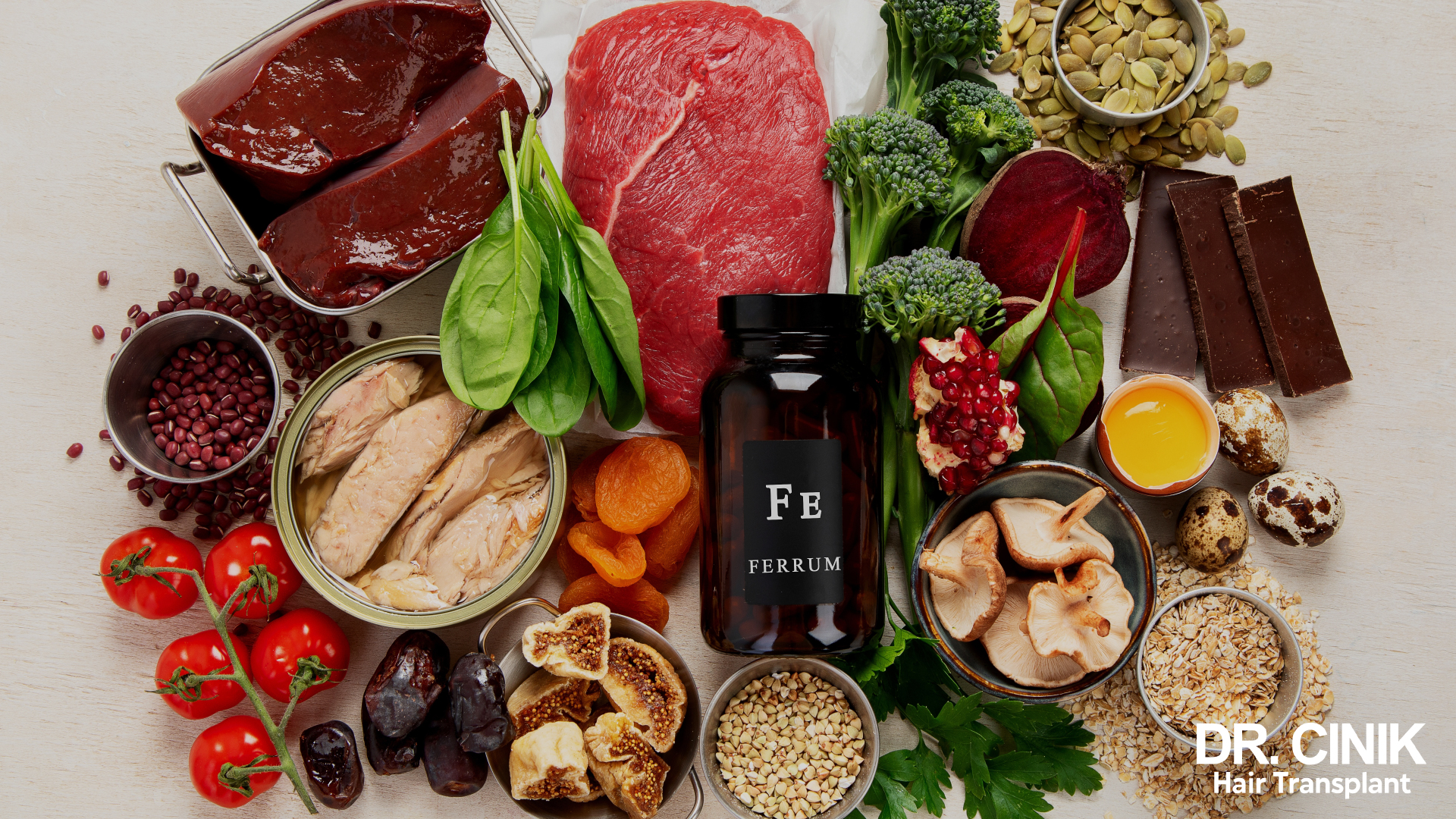
To optimise the absorption of dietary iron, increase your consumption of foods rich in vitamin C. This vitamin significantly improves the assimilation of iron, particularly that of plant origin (Almohanna et al., 2018). Citrus fruits, kiwis, peppers, or even fresh parsley are all allies to integrate into your iron-rich meals.
Beyond diet, stress management represents an often overlooked but crucial factor. Chronic stress disrupts many physiological mechanisms, including those involved in the hair cycle. Relaxation techniques, regular physical activity, or better sleep hygiene can help reduce the negative impact of stress on hair health.
The use of suitable hair care products can also support hair growth during this recovery phase.
When to Consider a Hair Transplant?
Hair transplantation becomes an option to consider when hair loss is permanent and conventional medical treatments, including the correction of nutritional deficiencies, have failed to restore satisfactory density. This procedure is particularly indicated in advanced cases of androgenetic alopecia or when certain areas of the scalp are permanently bald.
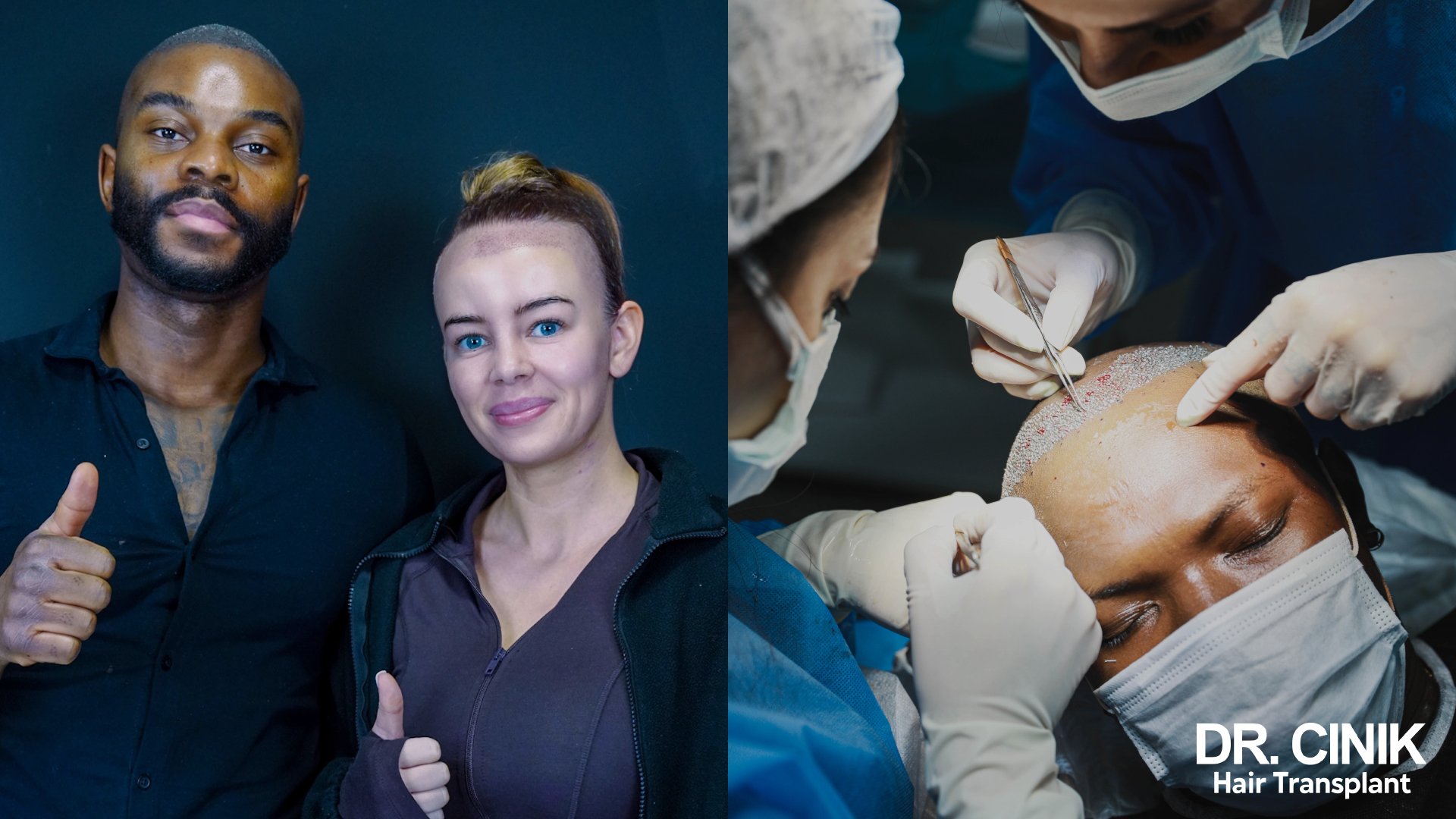
For natural and lasting results, the choice of an experienced surgeon is crucial. In Istanbul, Dr Cinik has established himself as an international reference in this demanding field. Turkey, and particularly Dr Cinik’s clinic, combines the advantage of a significantly lower cost compared to Western Europe, while maintaining international standards of quality and safety. This financial accessibility, combined with the recognised expertise of Turkish practitioners in the field of hair transplantation, explains the growing appeal of this destination for European patients seeking a definitive solution to their baldness problem.
Lack of Iron and Hair Loss: Key Takeaways
- Iron deficiency disrupts the oxygenation of hair follicles, causing diffuse hair loss that becomes dull, brittle, and with compromised regrowth (Trost et al., 2006).
- Women of childbearing age, particularly those with heavy periods, pregnant or breastfeeding women, as well as people following a vegetarian diet, are at increased risk of iron deficiency (Almohanna et al., 2018).
- An enriched diet in iron sources (meats, fish, legumes) and vitamin C improves mineral absorption and gradually helps restore hair health (Almohanna et al., 2018).
- Consulting a specialist is necessary in case of persistent massive hair loss to confirm the diagnosis and possibly implement appropriate supplementation. Serum ferritin tests may be recommended, with optimal levels suggested above 70 µg/L for hair health (Park et al., 2013).
- When hair loss is permanent despite the correction of deficiencies, hair transplantation performed by an expert like Dr Cinik in Turkey constitutes a definitive solution to regain a dense and natural head of hair.
Sources
Almohanna, H. M., Ahmed, A. A., Tsatalis, J. P., & Tosti, A. (2018). The Role of Vitamins and Minerals in Hair Loss: A Review. Dermatology and Therapy, 9(1), 51-70. https://doi.org/10.1007/s13555-018-0278-6
Park, S. Y., Na, S. Y., Kim, J. H., Cho, S., & Lee, J. H. (2013). Iron Plays a Certain Role in Patterned Hair Loss. Journal of Korean Medical Science, 28(6), 934-938. https://doi.org/10.3346/jkms.2013.28.6.934
Trost, L. B., Bergfeld, W. F., & Calogeras, E. (2006). The diagnosis and treatment of iron deficiency and its potential relationship to hair loss. Journal of the American Academy of Dermatology, 54(5), 824-844. https://doi.org/10.1016/j.jaad.2005.11.1104

